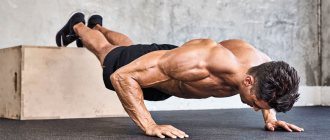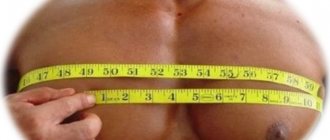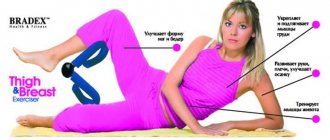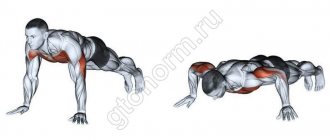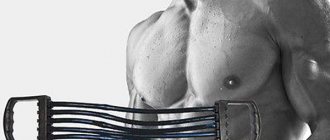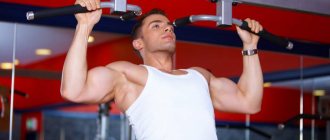It's been more than four decades since Arnold Schwarzenegger won the last of his seven Mr. Olympia titles in 1980, but the training that helped him become arguably the greatest bodybuilder is as relevant today as it was then.
From his emigration from Munich to Southern California in 1969 until his first retirement from professional bodybuilding in 1975 (1980 marked his brief competitive return), everything Arnold did revolved around training with iron.
He trained twice a day at the Gold Gym in Venice, California, joined by all of his closest friends—bodybuilding icons like the late Franco Colombo, Frank Zane and Dave Draper.
His workouts lasted for hours, with an endless number of exercises and approaches. It was the epitome of high-volume training, a style of training that is criticized by most experts today as not allowing adequate muscle recovery.
But there was a method to Arnold's madness. Below you will see his actual workouts for different muscle groups, which the “Austrian Oak” performed during the heyday of his career, when he was the undisputed king of bodybuilding.
Arnold's Competitive Period Data Statistics
- Born: July 30, 1947, in Graz, Austria
- Height: 188 cm.
- Arms: 56 cm.
- Chest: 145 cm.
- Waist: 86 cm.
- Hips: 72.3 cm.
- Shin: 51 cm.
- Off-season weight: about 113 kg.
- Competition weight: 102–106 kg.
Arnold Program: Double Split
Days: 1, 3, 5
- Morning: Chest, back
- Evening: Legs, calves, abs.
Days: 2, 4, 6
- Morning: Shoulders, triceps, biceps
- Evening: Calves, abs
Day 7: Rest
Breast
Trying to describe Arnold's chest and back exercises separately can be a little challenging; he combined their training together in a superset fashion for most of his bodybuilding career.
However, for the sake of orderliness, in this article we will focus on each body part individually, since each workout can also be done independently.
Arnold had simple reasons for using supersets: first, they saved time and allowed him to work his chest and back together in about one hour.
Second, he felt that he could handle more weight this way and thus develop greater muscle density (same logic as training opposing muscle groups together). And, of course, three, because he enjoyed the process.
As he once said, “When the chest and upper back”—in fact, his entire upper body—“flex simultaneously, there is an indescribable sensation of stimulating growth and bulk.”
But Arnold also warned beginners about this style of training, advising them to work with it carefully and slowly because of the demands it places on endurance and patience.
Even for experienced athletes this can be difficult. Arnold once told a story about introducing his chest/back workout to several experienced bodybuilders while visiting South Africa.
According to "Oak", two of his training partners "passed out, and the third was so sick this morning that he couldn't eat breakfast!"
Training Tips
- Despite the relatively high rep range, Arnold tried his best to train his chest to maximize muscle growth. He typically used the pyramid principle, increasing the weight and decreasing the number of repetitions for each set of a given exercise.
- He also regularly performed straight-arm pullovers in his workouts using dumbbells or a barbell. Arnold felt that pullovers expand the sternum and increase its volume, although this has never been proven.
- In addition to supersets, Arnold frequently used forced reps, iso-tension (holding competitive poses between sets and after training), and peak contractions (squeezing the muscles at the top of each rep's range) in his workouts. He did everything he could to increase the intensity.
Arnold Chest Workout
- Bench press on a horizontal bench – 1 set of 30-45 reps *
- Bench press on a horizontal bench – 5 sets of 20-6 reps**
- Incline bench press – 5 sets of 10-15 reps.
- Dumbbell flyes on a horizontal bench – 5 sets of 10-15 repetitions.
- Weighted parallel bars – 5 sets of 15 reps.
- Dumbbell pullover – 5 sets of 15 reps.
*Performed as a warm-up
**Arnold increased the weight and decreased the number of repetitions in each set.
Training principles
- The main exercise of the bodybuilding legend was the barbell press on a horizontal bench. He performed this exercise in different ways, using different grip widths, sometimes using extreme weights, but mostly he worked in the usual mode for bodybuilders.
- Schwarzenegger also paid great attention to pumping. These methods and training regimens were applicable not only to pressing techniques, but also to other exercises of the training process aimed at developing other muscles.
- Most of the training was based on the “pyramid” principle. In this training scheme, the athlete started with a light weight and reached the maximum, gradually reducing the number of repetitions. And after reaching the peak of the load, he “descended in weight” down.
- The athlete also used dropsets, dropping the weight on the last approaches and continuing to perform the exercises without rest between approaches.
- Arnold performed five sets of each chest exercise. This included a warm-up approach.
- The bodybuilder used mixed training, in which he managed to combine both strength training and one aimed at muscle volume.
Arnie's maximum bench press weight was more than 240 kilograms. By the way, Schwarzenegger considered fixing the elbow joints in a non-extended state to be an important point in working with heavy weights, that is, the arms in the elbow joints should not be completely straightened. Firstly, straight arms are a risk of injuring the joints, and secondly, it minimizes the load on the triceps.
Chest/Back
When Arnold was in pre-contest mode, he increased the intensity of his workouts, combining chest and back work to create a high-intensity mega workout. This is what it looked like:
Arnold superset for chest/back
1. Bench press on a horizontal bench – 1 set of 30-45 reps*
Superset
2A. Incline bench press – 5 sets of 6-8 reps.
2B. Wide grip neck pull-ups – 5 sets of 15-8 reps*
Superset
3A. Incline bench press – 5 sets of 10-15 reps.
3B. T-bar rows – 5 sets of 10-15 reps.
Superset
4A. Dumbbell flyes on a horizontal bench – 5 sets of 10-15 repetitions.
4B. Bent-over barbell row with wide grip – 5 sets of 10-15 reps ***
Superset
5A. Dips – 5 sets of 15 reps.
5V. Close grip pull-ups - 5 sets of 12 reps.
Normal execution
6. Pullover with dumbbells – 5 sets of 15-20 repetitions.
7. Iso – tension, muscle contraction****
* Performed as a warm-up
** Increase weight and decrease reps per set
*** Performed while standing on a block or bench to increase range of motion
**** Performed as a final exercise
Arnold's secret to progress
The Arnold complex consists of 9 exercises. Four of them fall on the pectoral muscles and exactly the same number on the back muscles. The workout is completed with pullovers - the only exercise in the world that can simultaneously load the chest and back.
There were 45 sets in total, and Arnold rested no more than a minute between supersets. As a result, the joint training of the back and chest took 45 minutes.
By the end, Arnold's T-shirt was completely wet, and he almost lost consciousness. The custom of those days was to have an oxygen cushion right in the gym. Arnold touched her more often than others.
However, the efforts were not in vain. Somehow, his amazed comrades persuaded Arnold to measure his chest immediately after training. The measuring tape showed a sensational 143 cm!
Despite their “illogicality,” supersets for the chest and back have remained in the arsenal of our sport as one of the most effective training techniques.
It is worth trying for anyone who is interested in extreme muscle volumes.
Arnold Superset No. 1
Bench Press and Wide Grip Pull-Ups
The first superset was considered a warm-up. With a barbell weighing 60 kg, Arnold did 30-45 repetitions. Then he did 15 pull-ups. The next 5 sets were shuttle runs from the bench press rack to the bar.
The “pyramid” bench press included 15-15-12-8-6 repetitions. The weights increased from set to set. Pull-ups were also performed with increasing weights using the “pyramid” method. However, there was no strict scheme here. No matter how hard it is for him. Arnold never held his breath.
Notes : A beneficial factor in superset training is powerful breathing that expands the chest.
Arnold Superset No. 2
Incline Bench Press and T-Bar Row
Incline presses are the only truly effective exercise for the upper pecs. After a short rest, Arnold began the second superset.
He valued the T-bar row for providing a strong lat stretch at the beginning of a rep. The “Pyramid” included 15-12-12-10-10 repetitions. This exercise, unlike pull-ups, no longer worked on the width of the back, but on its “thickness”. The last set was monstrously difficult.
Arnold Double Split
Today, double split is used only as part of pre-competition preparation. The program really grew Arnold's muscles, but those... those who decided to follow it “broke” over time. The stress of the training was clearly excessive.
However, the real reason for failure lies in the attempt to train linearly using the Arnold method. Practice the circuit in cycles for 2 weeks straight, then give yourself a few days of complete rest.
Double Arnold split is performed using the following program:
3 cycles every day, alternating the following muscle groups:
In the morning : Chest, Back - In the evening : Legs, Calves, Abs
Morning : Deltas, Arms – Evening : Calves, Abs
The seventh day is rest.
Arnold Superset No. 3
Lying Dumbbell Flyes and Wide Grip Bent Over Rows
Arnold had heard well about a common injury - rupture of the pectoral muscle ligament when it is overstretched. In the interests of safety, he never abused the width of the amplitude when performing such an exercise as lying down with dumbbells.
While others tried to lower the dumbbells lower and thereby stretch the pecs more, Arnold limited the movement to the level of the pectoral muscles themselves.
A typical sign of the time was the clanging of dumbbells when they hit each other above the chest, but Arnold was skilled in anatomy and knew that the vertical position of the arms meant relaxation of the pecs.
The weight of the dumbbells is taken by the bones of the arms (humerus and elbow), which form strong straight supports when the elbow joints are closed. To maintain tension in the pectoral muscles, he left his arms slightly apart in the final top position of the exercise.
The "pyramid" for both exercises included 15-12-10-10-10 repetitions.
Arnold Superset No. 4
Weighted push-ups and tight pull-ups
Arnold hung a 40 kg dumbbell on his belt and did push-ups on the uneven bars exactly 15 times in each set. As for pull-ups, he performed them atypically.
On top of the crossbar he installed the well-known V-handle, which is used in block rows from above and to the waist while sitting. Then he stood under the bar, grabbed the handle and began to pull himself up. In sets he could do up to 12 pull-ups.
This superset was the last and included auxiliary exercises designed to increase the overall volume of the workout. However, Arnold never allowed himself to do hack work.
Since supersets provide forced blood flow to the muscle groups involved, you get an incomparable pump from this technique.
Back
Creating a wide, thick, detailed back is not a new idea, open exclusively to modern bodybuilders such as Ronnie Coleman, Jay Cutler and Phil Heath.
Arnold, Franco Colombo and others they trained with also knew the importance of bodybuilding poses such as double biceps in the back, lats in the front to win major competitions.
When Arnold trained his back, he didn't just concentrate on lifting the weight into the desired position, like other bodybuilders did. After all, he would never be the best.
For example, during wide-grip lat pull-downs, he imagined that he was trying to pull the sky toward him, rather than simply moving the handle of the machine to his upper chest.
In the deadlift they weren't weight plates on the ends of the barbell, they were huge planets. The thoughts were abstract, confident, but, nevertheless, they gave a certain effect.
There was one potentially effective imaging technique that Arnold did not know at the time. “If I had known about Conan the Barbarian during the competition years,” he said before the film was made, “I probably would have imagined myself as him during training.”
He intended to develop a back for the film because he knew it would be clearly visible from many camera angles - and the last thing he wanted was less than huge lats if he wanted to be a real barbarian. “I want my back to be full of strength,” he said. “If my back muscles move and quiver during fight scenes, the audience will know that I am a tough fighter.”
Training Tips
- Arnold believed that it was best to train all areas of the back—outer, upper, lower, middle—and then finish the workout with a strength movement, such as a deadlift or barbell snatch, that targets all of the back muscles.
- After each back exercise, Arnold stretched his lats by pulling hard on a stationary object with one or both arms fully extended. He believes this has helped him develop overall good lats and remain flexible and flexible in his upper body.
- When he wanted to engage his lower lats, he always used a close grip for pull-ups, rows, and any type of row. The development of his lower lats helped complement the greater width of his upper body.
Arnold back workout
- Wide grip pull-ups with weights – 5 sets of 15-8 reps *
- T-bar rows – 5 sets of 10-15 reps.
- Bent-over barbell rows – 5 sets of 10-12 reps.
- Close grip pull-ups – 5 sets of 15 reps.
- Deadlift – 3 sets of 6-10 reps.
* Increase the weight and decrease the number of repetitions in each approach.
Shoulders
“A man with broad shoulders feels superior and has a greater sense of security and self-confidence,” Arnold once told a magazine.
Not surprisingly, he scoffed at the large number of bodybuilders he knew whose training regimens lacked any shoulder work.
It's no surprise that the only exercise named after him, the Arnold Press, is a deltoids exercise.
Early in his bodybuilding career, Arnold's deltoids were the weakest part of his upper body.
So he worked tirelessly on them, and after winning the 1967 Mr. Universe competition in London, he attributed the victory largely to his improved shoulder development.
Three years later, in the 1970 Universe, he defeated his idol Reg Park and again wrote that he was grateful for training his shoulders so hard.
Joe Weider once asked Arnold what role he thought bone structure played in shoulder development—in other words, were some people born with more potential than others?
The future governor of California has acknowledged that some people have a genetic advantage (Steve Reeves and Frank Zane among them), but that doesn't mean others, less blessed, can't greatly improve their knowledge in this area.
He claimed that anyone could widen their shoulders by at least 5 centimeters with "direct and specialized training."
Training Tips
- Arnold kept barbell work to a minimum when training his shoulders. He reasoned that all the bench and incline presses he performed, which also hit the delts to some extent, would be enough.
- For a while he trained his delts primarily in workouts that also included arms, explaining that his delts were naturally weak and needed to be worked while they were fresh. It would be hard to find Arnold training his shoulders in the same workout as his chest, as many people do.
- Even though they weren't often mentioned, the trapezius muscles were never ignored in Arnold's training. He often pumped traps after delts in the same workout.
Arnold Shoulder Workout
- Barbell curls and standing presses – 1 set of 20-30 repetitions.
- Arnold Press – 5 sets of 6 reps in a superset with bent over dumbbell lateral raises – 5 sets of 8-10 reps.
- Lying dumbbell lateral raises – 5 sets of 12 reps *
- Lateral abduction of the arm from the lower block - 5 sets of 12 repetitions.
- Alternately lifting dumbbells in front of you - 3 sets of 12 repetitions.
*Lie sideways on an incline bench
Features and nuances of the training
Arnie also used parallel bar push-ups to train his pectoral muscles. He did this exercise with impressive weights, but the technique in his training was somewhat different than what we were used to. He performed push-ups at two-thirds of the amplitude with his body twisted forward. By the way, to emphasize the pecs, the best option would be parallel bars with wide handles.
Also, in each workout of the pectoral muscles, Schwarzenegger used stretching exercises, namely dumbbell lateral raises and pullovers. Moreover, he claims that you need to work in these exercises only with a large working weight and in the range of 12-15 repetitions. Perhaps Arnie is right, and this exercise in this mode is a truly highly effective way to develop the pectorals, but you still need to be aware that these exercises are very traumatic.
In Schwarzenegger's training, the main role was played by the use of different techniques, and not by the number and variety of exercises. This bodybuilder knew what he was doing, and therefore achieved unprecedented heights!
Legs
In the early days, Arnold's leg training protocol suffered from two critical flaws: lack of use and, as Joe Weider called it, primitivism. The first was quite simple: the young Austrian did not train his legs at all in his first year of bodybuilding.
Having finally grasped the needs of lower body training, he went beyond that, even going so far as to train his legs every day for a year with 10 sets of squats and 10 sets of leg curls. Not surprisingly, he was not satisfied with the results.
His "primitive" methods were most evident in the climbing "retreats" he and his buddies made in the Austrian countryside.
They loaded several cars with cargo (and girls) and drove off to a remote area among the trees where they could train. They squatted from morning until noon, rested, had fun, drank beer, and then returned to squats again.
When Vader appeared, outdated training methods went by the wayside, as did drinking beer. He felt Arnold's legs become bulky and fuzzy.
“Your legs are suffering compared to your upper body, and you desperately need to completely change your leg training program,” Weider told young Arnold. "I also think others may have noticed this strange effect and been puzzled by it."
Arnold agreed. The result of this rethink was the type of training you see here, not to mention the proportionate legs that helped him win seven Mr. Olympia titles.
Training Tips
- Arnold often divided his quadriceps workouts into two sessions, performing the first three hip exercises in the morning and the last one or two in the evening. This ensured that each exercise was performed at maximum intensity.
- Despite the intensity of his leg training, Arnold usually took short breaks between sets - no more than one minute. This created a “filling” effect, keeping maximum blood in the muscles throughout the session.
- Sometimes he would do leg curls mid-workout (after squats and before leg presses) to give the front of his thighs a little break. Then at the end of the workout he would do more sets of hamstrings.
Arnold's leg workout
- Back squats – 5 sets of 8 reps.
- Front squats with a barbell – 5 sets of 8-10 reps.
- Leg press – 5 sets of 10 reps.
- Leg extensions – 5 sets of 10 reps.
- Lying leg curls – 8 sets of 10 reps.
Triceps
While his Alpine biceps account for much of his 56cm arms, Arnold was no slouch when it came to training his triceps, showing off impressive horseshoes on the backs of his arms.
After initially focusing on his biceps early in his career, he wised up and sought to build huge triceps using multi-joint movements like the close-grip bench press and weighted dips, in addition to his old standby exercises, the pulley press. lat pulldowns) and French press.
Arnold would sometimes superset his biceps and triceps, but usually only during pre-competition training. This further demonstrated his strong belief in the benefits of training opposing muscles together, an idea recognized by Joe Weider before him and by many bodybuilders to this day.
The pre-competition program typically consisted of five torturous biceps/triceps supersets, repeated four times each, followed by five forearm supersets. To increase size, he did this twice a week; for clarity and muscle definition three times a week.
Although he cautioned beginner athletes against following his program (“This system... represents a serious form of advanced training that is not recommended for beginners,” he once said), he did recommend the program to non-beginners in a special article entitled “How I built my 56-centimeter arms.” “If you are an experienced athlete and want to start growing your arms,” he wrote, “why not try my arm growth program twice a week? She increased the volume of my arms to their current huge size... look what she can do for you"
Training Tips
- Arnold believed that to increase the size of your arms you need to gain weight. He calculated that he needed to gain about 4.5 kilograms in weight to add 2.5 cm in volume to his arms. To do this, he increased his caloric intake by 1500–2000 kcal per day compared to his typical diet.
- A typical repetition for Arnold involved lowering the weight slowly in the negative phase of the movement and raising it quickly in the positive phase. This gave him "double the benefit on every rep" and maximized muscle growth.
- For most of his career, Arnold trained his arms two to three days a week at very high volume. He was even known to spend an hour or two just on his triceps. Of course, conventional teaching methods do not justify this.
Arnold Triceps Workout
- Close-grip bench press – 5/6 sets of 6-8 reps.
- Extension of arms from the upper block - 5/6 sets of 6-8 repetitions
- French bench press with EZ-bar lying – 5/6 sets of 6-8 reps.
- Bent over arm extension with dumbbells – 5 sets of 6-8 reps.
Biceps
Inspired by photographs of his childhood idol Reg Puck in the German magazine Der Muskelbilder, Arnold first visited the gym as a teenager.
He watched gym goers lift weights and did his best to memorize the exercises so he and his friends could do them at home.
Four arm exercises stood out: barbell curls, incline dumbbell bicep curls and Zottman curls for biceps, and close-grip bench press for triceps. At the time, he was most interested in big hands, so that was his starting point.
Surprisingly, when Arnold arrived in America, he had never even seen an isolation curl bench, a device he would soon begin using religiously to build biceps that dwarfed even his predecessors Larry Scott and Sergio Oliva.
He also discovered that American bodybuilders trained more methodically and had a more solid understanding of anatomy and physiology than he did.
Even though he already had the Mr. Universe title and the two biggest hands in the world, he felt he could do better.
“I failed to realize my full potential,” he said many years later. “The deep fibers of my muscles remained intact. It’s like I’ve built a big building on a foundation of sand.”
He recalled watching Scott train and being "particularly fascinated by watching him bomb his biceps on the isolation bench." His arms looked strong and thick after the workout.”
Despite Arnold's incredibly high biceps peak, we can confidently say that it is not a tumor.
Training Tips
- Arnold wasn't afraid to change up his arm exercises, especially standing curls. He felt that working very hard was the best way to gain mass, and if lifting weights required a little cheating, so be it.
- To achieve full biceps development, Arnold always included in his routine at least one exercise (such as dumbbell curls) in which his palm rotated upward (supination) as he lifted the weight.
- Even though the biceps are a relatively small muscle group, Arnold typically trained them at about the same volume as the larger body parts and with the heaviest weights he could handle.
Arnold Biceps/Forearm Workout
- Barbell curls – 6/7 sets of 6-8 reps.
- Seated dumbbell curls on an incline bench – 6/7 sets of 6-8 reps.
- Curling arms with a barbell on an isolation bench – 6/7 sets of 6-8 repetitions.
- Concentrated dumbbell curls for biceps – 5 rounds of 6-8 repetitions.
- Reverse barbell curls for biceps – 5 sets of 8-10 reps.
- Reverse barbell curl for biceps on an isolation bench – 5 sets of 8-10 repetitions.
- Barbell Wrist Curls – 7 sets of 10 reps.
Press
Arnold's stomach was not his strong point. He didn't have a naturally thin waist, nor did he have the deeply etched abs of Frank Zane or Serge Nubret.
But his abs were not a clear weakness either. Perhaps it was because he was a master of deception.
Look at the footage of him posing and you'll notice that he often turned his upper body in such a way that he ended up facing the camera or the judges, regardless of the pose.
This gave him the appearance of a smaller waist and was an important strategy for him in competition.
He also defied any genetic disadvantages by adopting an extremely high-volume training routine consisting of many exercises and high repetitions.
He also admitted that eating right played a major role in reducing the amount of fat around his waist, allowing his abs to become more defined.
That his vacuum posture was not similar to Zane's was not due to a lack of effort or passion. Arnold considered the belly to be one of the most important parts of a man's physique, citing the sculpted bellies of the Greek gods as his inspiration.
“In competition, if you have a little bit of fat on your belly,” he once said, “you can forget about taking home a trophy.”
Training Tips
- Arnold believed that abdominal work should be done every day. He was even known to train it twice a day when he wanted to achieve noticeable results in a short time.
- Arnold's oblique training consisted primarily of controlled twisting movements while holding a barbell on his shoulders. He tried to avoid weighted incline crunches, fearing they would accumulate muscle in that area and make his waist larger.
- He usually trained his abs at the end of his workout, after his calves, another part of the body that he felt needed more frequent training to stimulate their necessary development.
Arnold Abs Workout
- Hanging knee raises – 3 sets of 25-50 reps.
- Raising the body on a Roman chair - 4 sets of 25-30 repetitions.
- Lying leg raises – 3 sets of 25-30 reps
- Side to side twists – 3 sets of 50 reps.
- Hyperextensions – 3 sets of 15 reps.
- Pulling the knees to the chest while sitting – 4 sets of 25-50 repetitions.
How do our muscles and brain work together?
Remember how the hypnotist begins his session with a call to relax. The answer is that tense muscles serve as that strong shield that protects our mind from other people's interference.
The surface layer of the brain, called the cortex, is a patchwork quilt woven from virtual projections of all muscles and muscle groups. As long as your muscles are in good shape, the electrical tone of the cerebral cortex will be high.
The brain seems to be covered with a protective force field. However, as soon as the muscles relax, the field goes out, opening the way for suggestion to the so-called. the subcortex, where the intimate mechanism of individual thinking lies.
As a result, the hypnotist can put any information he needs into the patient’s subconscious.
This situation is the main problem of all bodybuilders . The fact is that the act of suggestion takes place whenever our muscles get tired. And then at the end of the training, when the athlete can barely stand on his feet, he becomes his own hypnotist.
Arnold's training. Read from the link
The exercises he does, their order and the working weights used are firmly imprinted into the bodybuilder’s brain. As a result, against his own will, the athlete becomes a retrograde. He stubbornly sticks to a routine training rut, resolutely rejecting new techniques and training methods.
It’s hard to imagine how many talented bodybuilders have become victims of subconscious self-hypnosis! They have become slaves to the established order of things, both in training and in life. Their existence turned into running in place, without a goal or any guidelines.
Initially, Arnold trained according to a complex that his older comrades put together for him. They were local authorities and in the evening they filled a small athletic club, where they competed with each other in working weights and the number of repetitions done.
If Arnold had been different, he would have joined their ranks, and the world would never have known the Terminator. However, he was distinguished by a surprisingly lively mind, and the shackles of the training routine failed to fetter his will.
Arnold was not satisfied with provincial glory, and he set out to conquer the world, and it was precisely his inquisitive mind that led him to an unusual decision: contrary to the rules, he began to train daily, and even twice a day.
However, the topic of this article will be another revolutionary discovery of Arnold , which, according to him, made the native of Austria a multiple champion of Olympia.
The author Joe Weider himself declared supersets a technique for small muscles. However, Arnold decided to combine exercises for the chest and back muscles into supersets. The result of such training amazed the imagination of those around him: Arnold became twice as wide right before their eyes!
Arnold's diet. Read from the link
Caviar
Arnold's self-consciousness about his calves has been widely publicized over the years. They used to be small, so he cut off the bottom of his sweatpants while he was working out.
This motivated him to improve the area, which he eventually did, building massive calf and soleus muscles.
Extremely high training volume and frequency were his keys to identifying this weak point. When it came to training his calves, Arnold was a little smarter. Here's what he said in an episode of Muscle Builder:
“Calves are like no other muscle and they seem to be in a different mood every day. Sometimes I can do calf raises with shoes on and it feels better, sometimes my shoes get in the way and I have to do the exercise barefoot... It's weird, kind of weird.
“The secret I've learned is to test the individuality and position of the calves with two or three sets, and then I know which way they want to go that day. They will let you know - just give them a chance to "talk" to you. It's like they have a mind of their own—a brain that other muscles don't have.”
Training Tips
- Arnold loved variety when it came to training his calves. Anything that shocked stubborn muscles was fair game: high reps, low reps, super short rest periods (15-30 seconds), supersets, etc.
- For the most part, his calf exercises pushed them through a full range of motion—down to a full stretch, then up until they were fully contracted. But sometimes he would also do full sets of partial reps, which allowed him to work much harder; or he'd finish full-range-of-motion sets with a few partial exercises to burn off his calves.
- It was not uncommon for Arnold to train calves six days a week in his famous double-split training regimen. The calves were usually worked with the abs in an afternoon workout, either with the quads or on their own.
Arnold's calf workout
- Donkey calf raises - 5 sets of 15-30 reps.
- Standing calf raises – 5 sets of 15-30 reps.
- Toe press in the simulator – 5 sets of 20-30 repetitions.
- Calf raises with dumbbells on one leg while standing – 3 sets of 15-30 repetitions.
#3 Dumbbell flyes
Arnold liked to “finish off” his pecs with this exercise at the end of his workout. According to him, the exercise helped to stretch the pecs and work out their inner part.
Arnie did the exercise paying special attention to breathing technique . Before lowering the dumbbells, he took a deep breath and, as he exhaled, raised them. This technique helped to further stretch the pectorals at the lowest point.
By the way, regarding the bottom point. Arnie always tried to lower the dumbbells as low as possible so that they were quite close to the floor.
At the top, Arnie tried not to touch the dumbbells, but to keep them one foot apart from each other , since further movement no longer activates the pecs, but at the same time requires strength, which makes it impossible to successfully complete the following repetitions.
